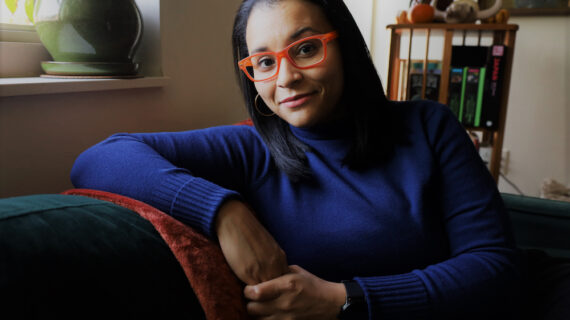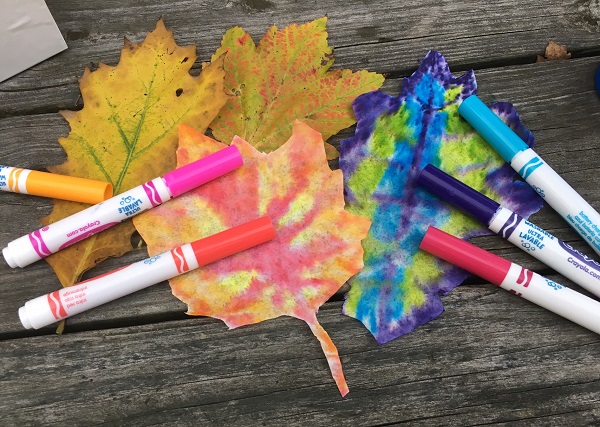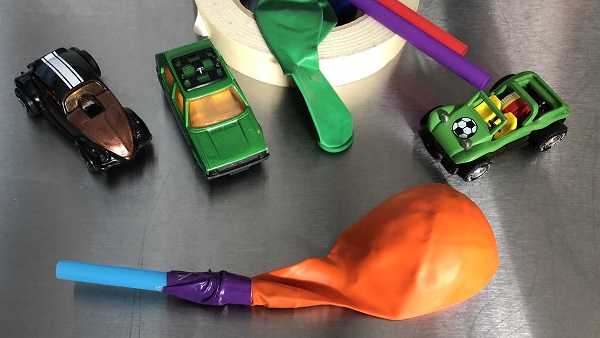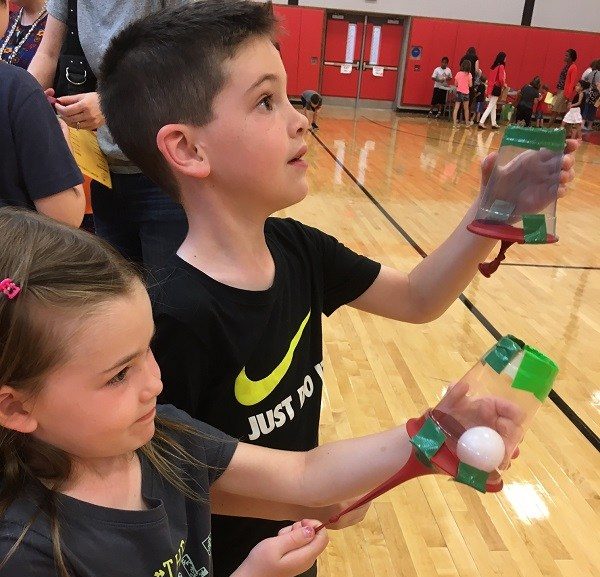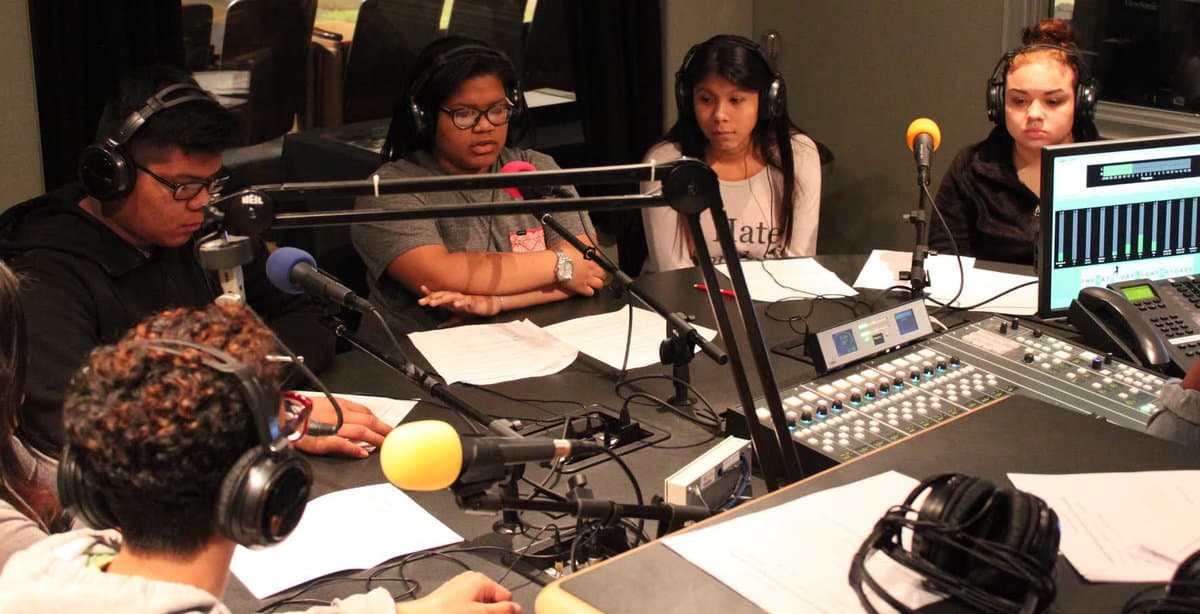
Local nonprofit Steel City Squash is changing lives through athletics and academics
Photos courtesy of Steel City Squash.
The sounds of rubber balls thumping against the walls reverberate through Larimer’s brand-new squash center. But it’s not just the sport making an impact — it’s the promise of a brighter future. This September, the doors of the newly constructed Steel City Squash swung open, marking a monumental step for the Larimer community.
The building is impressive: a $10 million state-of-the-art complex with eight squash courts, including a stunning glass-walled championship court. In this space, Steel City Squash combines rigorous academics with the discipline of sport.
Their free Academy program is designed for kids in 4th through 12th grades, especially those from partner schools or low- to moderate-income families. Half of the spots are saved for kids from Larimer. The best part? No sports experience is needed.
The program runs Monday through Thursday, 3 p.m. to 6 p.m., mixing time on the squash courts with academic tutoring.
“Steel City Squash is all about providing long-term support to help students thrive academically and socially,” says Brad Young, the executive director of Steel City Squash. “Our primary goal is to break the cycle of generational poverty by investing in youth enrichment over an extended period. … We start working with students as early as fourth grade, focusing on reinforcing academic skills and providing remediation to ensure they’re on track.”

Welcoming the Whole Community
For those who don’t qualify for the income-based programming but still want in on the squash action, Steel City Squash offers fee-based options like the Junior Squash League for kids and regular memberships for families and adults.
Since its inception in 2015, Steel City Squash has been a lifeline for local youth, offering support and mentorship as they learn the game of squash. With a 100% high school graduation and college matriculation rate for participants, the program has proven that the connection between athletic discipline and academic success is profound.
Now, with the opening of this new center, Steel City Squash is ready to expand its reach, nearly tripling its capacity from 50 to 120 students. Along with squash courts, the center has classrooms and a college-and-career center.
Community advocates Donna Jackson and Betty Lane of the Larimer Consensus Group have been pivotal in this mission, working to ensure that the organization not only thrives but also deeply connects with the community it serves.
“The first engagement was a lunch meeting with Ms. Donna and Ms. Betty. We discussed recruiting students for our program, and during that conversation, I expressed our desire to build a home for our organization. After our conversation, Betty invited us to tour the neighborhood the very next day,” Young recalls. “Hearing Betty share the rich history and her hopes for Larimer was truly inspiring. The passion and love she has for this community are palpable.”
This partnership has been vital in shaping the vision for the new facility and designing the educational programming.
“In the early years, we focus on remediation and skill mastery, working closely with local schools to ensure our students are getting the homework support they need,” Young explains. “As they progress through our program, the emphasis shifts to social-emotional development, financial literacy, and ultimately, college and career readiness. We help students with test preparation, college access programming, and even the application and financial aid processes.”
To get a deeper understanding of the community’s vision, Kidsburgh sat down with Donna Jackson and Betty Lane, the dynamic duo behind the Larimer Consensus Group, to discuss their roles and the impact of Steel City Squash on the neighborhood.
Q: What personal connection do you each feel to Larimer, and how has that shaped your efforts in bringing this project to life?
Jackson: My journey with Larimer began in 2006 when I started working for the City Council. I witnessed the struggles the community faced — dormancy, lack of resources, and a dire need for development. It became clear to me that revitalizing this community was not just a professional goal but a personal mission. The opportunity to bring a once-dormant area back to life was exhilarating. We focused on affordable rental housing first, which was crucial to providing residents with the social and financial skills needed to elevate their living standards.
Lane: I’ve lived in this community for more than 50 years. And alongside Ora Lee Carroll, I was one of the founders of East Liberty Concerned Citizens. Back then, during a time of disinvestment, our goal was to rebuild and clean up the blight and vacancy that plagued our neighborhood. Now, with the opening of this new facility, I see it bringing different people into our community. It’s exciting to think that this could spark a desire to open new businesses or even build homes here.
Q: What was the moment when you both realized Steel City Squash could become a reality here?
Jackson: It was during our lunch meeting that we discussed the multifaceted potential of the project. Henry Simonds introduced us to Brad, and through our conversation, we recognized that this was more than just a squash facility; it was an opportunity to enhance education and community engagement. The commitment to designing a facility that was not only a sports center, but also an educational hub solidified our belief that this project could truly thrive in Larimer.
Q: What does this new squash and education center represent for Larimer, especially given the neighborhood’s history and challenges?
Jackson: This center represents a turning point for Larimer — a beacon of hope and growth. For too long, the community has been plagued by blight and vacancy, and this facility symbolizes a new beginning. It offers residents a space to live, learn, and play, reinforcing the message that Larimer is reclaiming its identity and vitality. This project shows that the community is actively engaging in its future and providing avenues for opportunity.
Q: Donna, during your initial meetings with Steel City Squash, what were the most important factors you highlighted about Larimer that helped seal the deal for this facility to be built here?
Jackson: I emphasized the physical attributes of Larimer, specifically its flat and walkable landscape. Accessibility is key for the community, and being able to walk to the facility ensures that all residents can benefit from its offerings. I also highlighted the potential for synergy with other local amenities, reinforcing the idea that the center would be an integral part of the community fabric.
Q: Betty, you took Brad Young and Lafe Metz on a special tour of Larimer. What was your thought process in showing them certain parts of the neighborhood?
Lane: I wanted them to see the vast potential within Larimer — large swaths of land that could accommodate the facility and its educational components. It was important to me to illustrate the history of the community, emphasizing its aspirations and the urgent need to reunite after the closure of the local school. My goal was to show them that beyond sports, this project could revitalize the community’s spirit and inspire young people to pursue higher education and personal growth.
Q: Can you share any memorable moments from the three-year process that stand out as pivotal for bringing this project to life?
Jackson: A memorable moment for me was realizing that Steel City Squash genuinely wanted to collaborate with the community. In many development projects, the developers come in with a predetermined plan. However, this experience was different — it was rooted in mutual respect. The willingness to incorporate community feedback into the designs and plans demonstrated a commitment to creating a facility that truly reflects the needs and desires of Larimer’s residents.
Q: What does squash mean for youth empowerment in Larimer?
Jackson: Traditionally, sports like football, basketball, and baseball dominate the landscape for African-American youth. However, introducing squash opens new horizons. It shows our children that they can achieve success in diverse sports, not just the ones typically associated with our community. This initiative aims to broaden their perspectives and encourage them to pursue excellence in various fields, both athletically and academically.
Q: How does this project honor the history of Larimer?
Jackson: This project honors the legacy of leaders like Ora Lee Carroll by initiating new housing developments and attracting people back to a community that has faced significant challenges. Many people outside the community might not realize the resilience and determination of Larimer’s residents. This project symbolizes renewal and growth—like the Phoenix rising from the ashes. We are rekindling the hope and potential that once flourished in Larimer.

